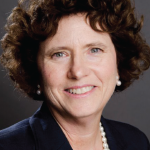
Editor’s Note: This month, “From the College” continues its look at advocacy from the viewpoint of ACR and ARHP advocates. Below, Deanna Sanchez Yamamoto, NP, a rheumatology nurse practitioner at Santa Clara Valley Medical Center in San Jose, Calif., explains how she went from being a clinician in California to an advocate on Capitol Hill by participating in “Advocates for Arthritis.”
I have never considered myself to be a political person, much less an “advocate,” which is why I was surprised to become an ARHP advocacy committee member.
It all began when I received a phone call from the president of the ARHP, Kim Kimpton, PT, telling me the ARHP needed a member from California to join the committee. I confess, at the first committee meeting I felt overwhelmed because I was unaware of the political issues, but it eventually became clear what I was being asked to do—make a difference for the patients in my practice. With that, I became an advocate.
With the help of the advocacy information on the ACR’s Web site, I identified every California congressman and congresswoman not supporting the Arthritis Prevention, Control, and Cure Act and faxed letters to them. This turned out to be a good start for a political novice because I became familiar with the names, political parties, and Web sites of every representative in the state.
The icing on the political cake was attending “Advocates for Arthritis” in February 2008. This event allowed me to visit Capitol Hill and visit the offices of those who make the laws that affect my patients and my livelihood. “Advocates for Arthritis” began with an advocacy training session the day before going to Capitol Hill. The session was filled with exceptional speakers and presentations preparing us for meeting with legislators. This training was welcomed—and well needed—as I was still new to advocacy and wanted some help to prepare for the important conversations to come.
The following day, I was in a group with a physician, a patient, an office manager, and an ARHP staff member—each of whom brought different experiences to share at the meetings on The Hill. At midday, we had lunch in the Capitol Hill cafeteria. As I looked around the room, I noticed it was filled with other advocacy groups—all with different agendas, all asking for support of their issues—and I felt proud and privileged that the ACR and the ARHP had given me the tools and opportunity to participate in this democratic process, helping to make a significant difference for our patients.


